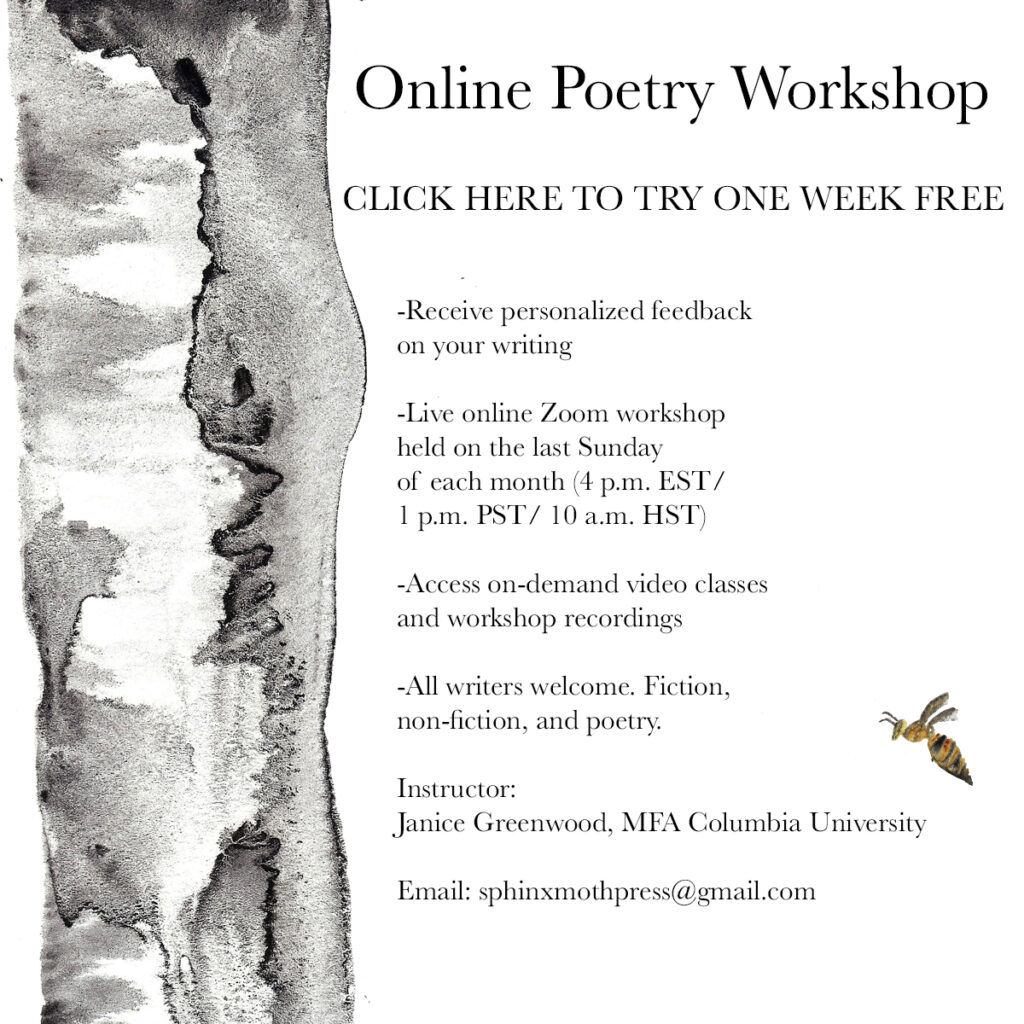Joan Didion’s evasive essay, “Some Women,” which can be found in her new book, Let Me Tell You What I Mean, is about Robert Mapplethorpe, but it is also about the artistic search for truth. The title of the essay is so vague as to misdirect the reader. The principles found here can be applied to any creative and artistic practice—poetry included. I’ll argue here that Didion’s essay is a workshop in how to write a poem.
Didion explains that, in Mapplethorpe’s photographs, for instance, the subject wasn’t “herself” as such, but whoever Mapplethorpe wanted her to be. The subject of a photograph, essay, or poem, for that matter, is seldom the subject most directly mentioned. Take Elizabeth Bishop’s poem, “The Fish” or Hemingway’s The Old Man and the Sea, for that matter.
For example, it is better to not try to make the subject of writing the subject of one’s writing. I’ll try to describe how to write a poem, but I find that once I decide a particular piece of writing is about something, the writing is dead on arrival. Once I sit down with the intention to write a poem about something in particular, the poem disappears. Or, I’ll sit down to write about a particular subject and find by the end of the poem that the subject has eluded me entirely, but another subject has emerged, sometimes more compelling than the first. One train may indeed hide another.
About her early sittings with Vogue’s photographers, Didion explains: “there would be in each such photograph a ‘subject,’ the woman in the studio, and there would also be a subject, and the two would not necessarily intersect. This business of the subject is tricky.”
Oh yes, I tell myself. I’m going to write a whole book about death. And just like that, the book about death is…dead. Didion is wise to remind the writer or aspiring writer: “the attempt to analyze one’s work, which is to say to know one’s subject, is seen as destructive.”
Poetic truth is unique in that there is something there, but it cannot be paraphrased. Poetry contains truth, but what truth? Perhaps trying to explain the aboutness of a poem is like trying to observe a particle. It’s either a wave or a particle, but it can’t be seen as both at the same time.
Light passes through a camera lens. It is focused onto the camera’s sensor or onto a piece of film, and an image is created.

Joan Didion writes that the person being depicted by the photographer was never the person herself, but “whoever and whatever it was that the photographer wanted to see.”
When I sit down to write a poem, I like to think that I’m writing about a subject, but what emerges is whatever the subject wants itself to be. Didion writes: “The business of the subject is tricky.”
Maybe I can tell you what a poem was all about after it is done, but to sit down and tell you what I plan to write would be foolish. Didion writes: “Gabriel Garcia Marquez once spoke to the New York Times about the “bad luck” that would befall him were he to discuss the novel he was writing; he meant of course that the novel would go away…” If I want my poetry to thrive, I’m better to not talk about it much.
I cannot tell you how to write a poem about anything because poems are not about things at all. I may have set out to become a writer because I wanted control of my subject, but a writer truly never has control of her subject, not if the work is to be thrilling, or full of potential. Maybe that’s why Mapplethorpe has faced so much recent revisionist criticism, like this piece in the New York Times. We want art to thrill with the possibility of what remains unsaid or unintended. Mapplethorpe controlled his subject matter, and while it was shocking for its time, the possibilities for his art are as tied up as his subjects.
And in a poem, so much of the poem’s vitality goes in what remains unsaid. Joan Didion’s essay “Some Women” is about the photographer Robert Mapplethorpe and it is about Vogue and truth and photography. Mapplethorpe was famous for his BDSM photographs, and he died of AIDS in 1989. In the entire essay, Didion writes about truth, the nature of the seen and unseen, subject matter and viewer, but she doesn’t mention the AIDS epidemic. She doesn’t mention the fragility of life, a pressure that exerts itself around the essay itself. She mentions that Mapplethorpe may have been struggling with illness, and that is all.
How do you write a poem about death? How do you write an elegy? How do you write about the AIDS epidemic in the late 80s. Perhaps you write it by not writing about it at all, by turning away from the subject itself?

About the Writer
Janice Greenwood is a writer, surfer, and poet. She holds an M.F.A. in poetry and creative writing from Columbia University.
